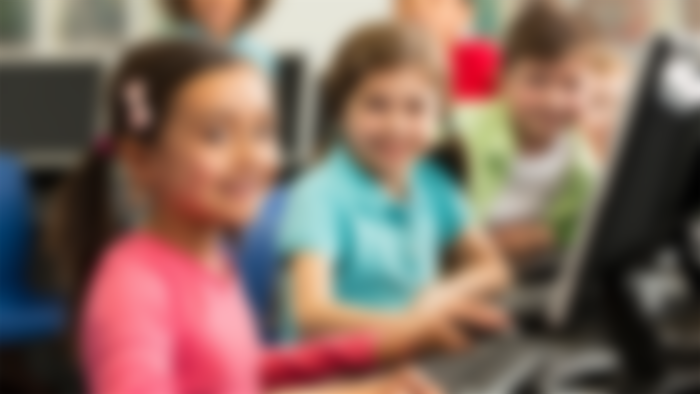Education in the New Normal: The Window of Trials and Opportunities
2020 was the year that felt like a decade. For most people, the world seemed to slow down. Specifically, on March 15 of last year, the strike of Covid-19 pushed the imposition of stay-at-home orders, enhanced community quarantines, and lockdowns in the Philippines. This pandemic up-to-date continues to disrupt the normal life in the social and economic aspects—shut down of businesses, a decline in the tourism industry, the rise of the unemployment rate, and retrenchment of workers. These are just among the counter effects of the efforts enforced by the government in response to ensuring protection to the health and safety of the people. However, under those facets, is the educational system has been gravely affected by this global crisis.
Given the grueling situation of Covid-19, the Commission on Higher Education (CHED) and the Department of Education (DepEd) took immediate steps through adopting and implementing the flexible model of blended learning despite many oppositions—all to ensure that no one gets left behind and education persists. As the world shifted to what is now the new normal learning system, this move provided challenges and opportunities, directed to the learners, parents, and educators, in terms of managing their mental state, disturbed routine, home as the alternative learning environment, and the existing digital divide amidst the ongoing crisis.

Learners. Many students consider their school as their second home and their educator as their parent figures that teach beyond reading and writing. School educators impart knowledge on nutrition, overall health, psychosocial support, and educating students about the risk of violence, early pregnancy, and more. On the contrary, with the prolonged closure of face-to-face learning set-ups, teachers are unable to take part in their role in assisting and honing their students to the best of their ability. Learners experience unique situations at home. Some belong to a broken family, while others are born in a family that places too much pressure on their children. For these learners, they perceive the school as an escape, where they acquaint themselves with their peers, ask for support from the educators, and the school environment serving as their breather. Now, with a flexible type of learning system, they are incapable of acquiring those needs, which results in stress and anxiety. On the other hand, students also encounter disturbed routines given that home is not an ideal place for learning. At home, there are too many distractions as they could just browse on social networks or surf the internet. In comparison to a face-to-face setup, rules and regulations are established to direct the focus of the learners. Furthermore, the current situation sheds light on the digital divide that’s long been existing. Not all children have the necessary gadgets, internet connectivity, or capable parents in supporting this type of learning system for their children. The struggle is especially prominent to the unfortunate ones. As these challenges dominate the current situation, it simultaneously goes along with opportunities seen to mitigate the expansion of these trials. Fortunately, the Philippines saw flexible learning as something that is not only about online learning, but also about modular learning materials that are distributed to the incapable of this online distance learning. This is in accordance with the objective of reaching as many students as possible.

Parents. In a survey released in March 2021 by the Social Weather Stations (SWS), 89 percent of Filipino families with members enrolled for the school year 2020-2021 consider blended learning to be “more difficult” than the regular face-to-face setup. Parents have shared that the current system, tends to require students to study by themselves. Their focus and concentration aren’t that aligned given that they are just at home. Despite the initiatives of the institutions to provide hard copies of learning materials and online support, the effectiveness varies for different learners. For instance, online students who had an excellent ability to score in academic tests have unexpectedly achieved lower results compared to their performance on face-to-face courses. This says a lot about the value of learning in a school setup. Furthermore, other parents also claim to end up shouldering the role of the teacher at home. This is particular to young learners and children with disabilities that needed assistance, which is especially difficult for those parents who are not full-time house parents. Some of them could be Overseas Filipino Workers or working in big corporations that take up most of their time. Additionally, this system could also burn them out affecting their overall health, transitioning from parenting to teaching, and carrying on with the digital means of learning, which appears challenging to those parents who are not well-informed with the usage of technology.

Educators. The trials of this flexible model of blended learning are not limited to learners and parents. Oftentimes, teachers are being blamed for the student workload, that sometimes they give too much, which results in burnout of the learners. While these reasons exist, everyone has to know that teachers follow a learning manual. They provide what they are tasked to teach students and allow them to apply the learnings they acquired through different sets of activities, assignments, exams, and performance tasks. This is just the same as a face-to-face set-up. People have to understand that what exhausts the learners is the type of system that is implemented and the situation we are in. Moreover, the digital divide does not only linger to parents and students alone. There are also some educators who do not have devices to use. Some of them are also not good at working with technology and the online means of teaching. This could delay them from their desired timeframe of teaching, which also affects the students. However, this challenge paves way for an opportunity for them to get better at connecting with students online. This speaks for improving how to operate the gadgets and the online video meeting apps.

In compliance with this new way of learning and teaching, extracted various trials directed to the learners, parents, and educators. This is an effort to avoid the risk of rapid virus transmission outdoors and an immediate intelligent strategy to pursue education in spite of the global crisis that the world is enduring. Education in the New Normal has never been a ‘piece of cake.’ It was hardly a smooth ride. Anyhow, the actions implemented by the government served as an avenue to slowly, but surely take an exit from this pandemic. People should view this as a gateway towards a foreseeable future, where the normal life in every aspect could get back in the game. In an attempt to discuss the window of trials in this online learning, it’s also equipped with opportunities. Let us view these trying times as soil to grow from. Flexible learning teaches us a lot of things and it is from those trials that we acquire those meaningful changes, which will become beneficial for the future that's to come.






Kindly subscribe to me too